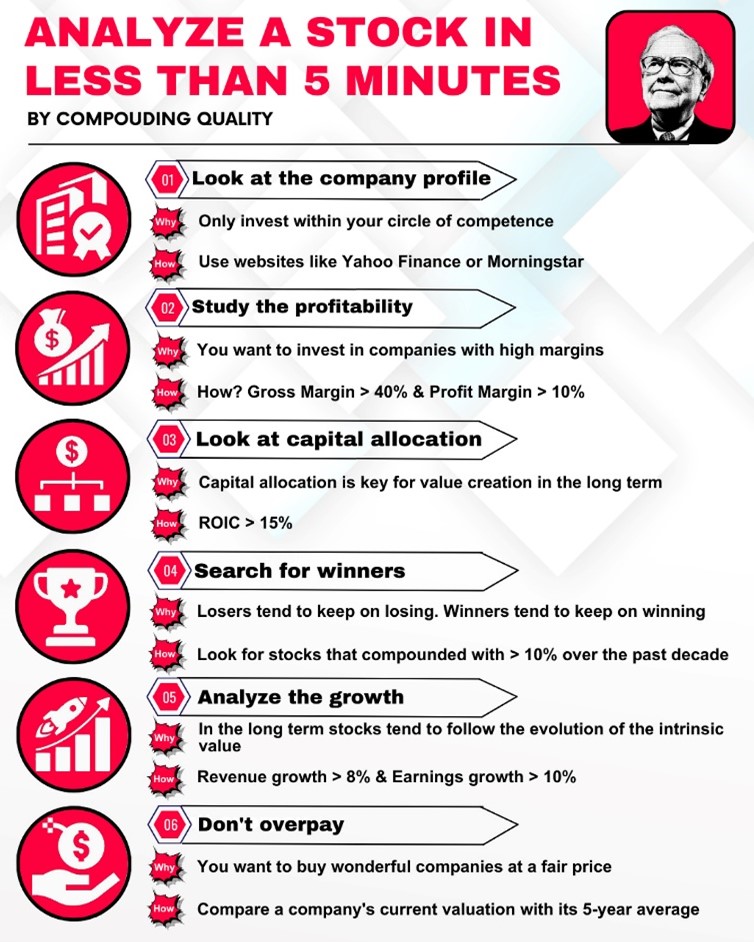In today’s world, there is an information overload. There are only 24 hours in a day and I’m sure you don’t want to spend them all on researching stocks. That’s why when you start looking into a company, you should try to find a reason to say ‘NO’ as soon as possible. When you haven’t found a reason to say ‘NO’ within a few minutes, you might have found something interesting, writes CQ, editor of Compounding Quality.
I recommend a six-step framework for determining whether to go further at that point...
 The first thing you need to do is to look at the profile of the business. Make sure that you understand how the company makes money. If you don’t understand the business model, you can stop looking at the company right away.
The first thing you need to do is to look at the profile of the business. Make sure that you understand how the company makes money. If you don’t understand the business model, you can stop looking at the company right away.
Second, you don’t want to invest in companies that aren’t profitable yet. Instead, you want to invest in companies that are very profitable.
These kinds of companies earn money for you while you sleep. You want to invest in companies with a high and consistent gross margin of at least 40% and a profit margin of at least 10%.
When a company has a high and robust gross margin, it’s a great indication that the company has pricing power as well as a sustainable competitive advantage.
Third, capital allocation is the most important task of management. You want to invest in companies that put your capital to work at attractive rates of return.
That’s why the Return On Invested Capital (ROIC) is one of the most important metrics for quality investors. Look for companies with a ROIC of more than 15%.
Fourth, you only want to invest in winners. You want a stock that managed to compound by at least 10% per year since its IPO.
Fifth, invest in companies that have the wind in their sails.
Revenue growth is the main driver for stock prices in the long term. That’s exactly why you want to invest in companies that managed to grow at attractive rates in the past and will continue to do so in the future. I like to seek companies with revenue growth greater than 8% AND earnings per share growth greater than 10%.
Finally, even when you invest in the best company in the world, you can end up with horrible investment results if you pay too much. That’s why you should also look at the valuation of the company.
A great way to get a first indication about valuation? Compare the company’s Price/Forward Earnings with the average Price/Forward Earnings over the past five years. Ideally, you want a company that is trading at a discount compared to its average valuation of the past five years.

















